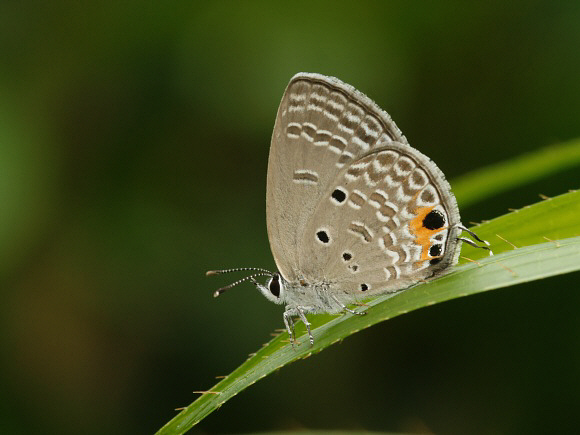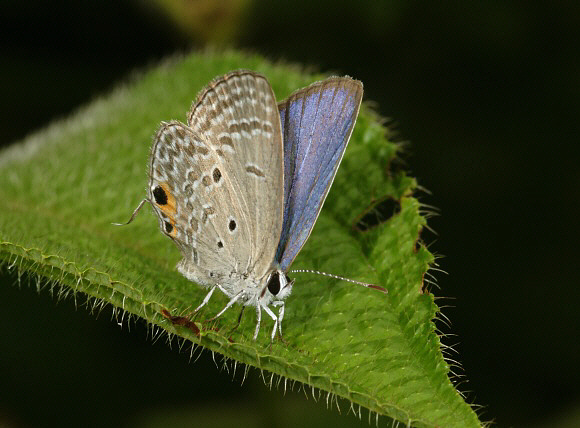
Introduction
The genus Chilades comprises 9 African species, and 5 from the Oriental region. The butterflies are closely allied to the Holarctic genus Polyommatus – a fact demonstrated by similarities between the male genitalia.
There are 2 species found in peninsular Malaysia – pandava and lajus. The latter has no tails, and is more heavily spotted on the underside. It also lacks the orange markings found in pandava. The males of both species are violet-blue above, whereas their females are pale earthy brown with a flush of silvery-blue scales on the basal half of the wings.
Chilades pandava is a widespread and fairly common species, found in Sri Lanka, India, Myanmar, Thailand, West Malaysia, Singapore, Sumatra, Borneo and the Philippines.

Habitats
The Cycad Blue, as it’s alternative name “Plains Cupid” suggests, is confined to the lowlands, being found mainly in gardens and parks, along roadsides, and other disturbed areas.
Lifecycle
Other Chilades species feed as larvae on a diverse range of plants including Acacia, Heliotropium, Indigofera, Andrachne and Heliophorum, but pandava is unusual in that it feeds almost exclusively on the tender young fronds of Cycas revoluta and other Cycads. These are a very ancient group of seed plants, similar in appearance to palms, with a crown of compound leaves and a stout trunk. They date back to the Jurassic era when dinosaurs ruled the Earth. Many cycad species are now rare, but several including the “Sago Palm” C. revoluta are commercially cultivated and grown in gardens and city parks.
As a result of cycad cultivation Chilades pandava has the potential to spread either by migration or by accidental introduction to many of the warmer parts of the world. In 2000 for example it was discovered on Mauritius, some 2500 miles from it’s native habitat, and rapidly became a pest of cultivated cycads.
The eggs are greenish-white, lozenge-shaped and covered with a coarse network of ridges. They are laid singly or dotted in groups of up to six, either on the emerging fronds of the foodplants, or attached to the edges of young leaves. The eggs are sometimes parasitised by the miniscule wasp Trichogrammatoidea guamensis.
The caterpillar when young is dark reddish-purple, but in the later instars is bright green, with dark lines along the back and sides, and a series of dark oblique sub-dorsal markings. It has a rough textured skin, and a small glossy black head that is partly retracted into the first thoracic segment.
The larvae are attended by ants which “milk” them by stroking a gland on the back which produces a sugary secretion. In return the larvae benefit from the protection afforded by the ants against predatory insects. Several species of ant are known to be involved including Prenolepis longicornis, Monomorium speculare, and unidentified members of the genera Anoplolepis and Crematogaster.
The pupa is formed on the ground, and is quickly buried by attendant ants.
Adult behaviour
The butterflies are usually seen in one’s and two’s, either sitting on low foliage, or nectaring at the flowers of various wild or cultivated herbaceous plants. Sometimes however they can be quite abundant, with up to a dozen fluttering about at a patch of flowers. At these times the males can be quite aggressive towards each other, and appear to own and defend territories.
